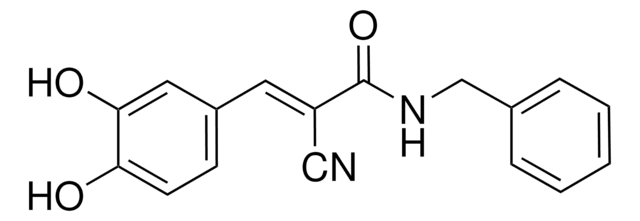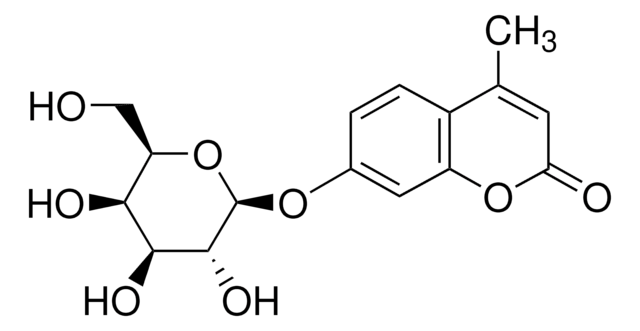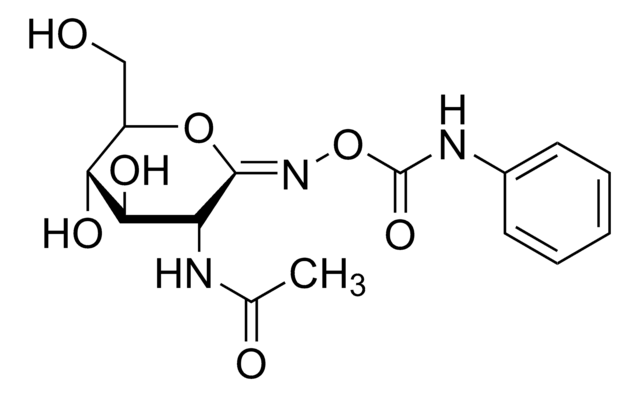Key Documents
D8941
2,6-Difluoro-4-[2-(phenylsulfonylamino)ethylthio]phenoxyacetamide
≥98% (HPLC), solid
Synonim(y):
PEPA
About This Item
Polecane produkty
Próba
≥98% (HPLC)
Postać
solid
warunki przechowywania
protect from light
kolor
white
rozpuszczalność
DMSO: >20 mg/mL
ciąg SMILES
NC(=O)COc1c(F)cc(SCCNS(=O)(=O)c2ccccc2)cc1F
InChI
1S/C16H16F2N2O4S2/c17-13-8-11(9-14(18)16(13)24-10-15(19)21)25-7-6-20-26(22,23)12-4-2-1-3-5-12/h1-5,8-9,20H,6-7,10H2,(H2,19,21)
Klucz InChI
GTACSIONMHMRPD-UHFFFAOYSA-N
informacje o genach
human ... GRIA1(2890) , GRIA2(2891) , GRIA3(2892) , GRIA4(2893)
Działania biochem./fizjol.
Kod klasy składowania
11 - Combustible Solids
Klasa zagrożenia wodnego (WGK)
WGK 3
Temperatura zapłonu (°F)
Not applicable
Temperatura zapłonu (°C)
Not applicable
Środki ochrony indywidualnej
Eyeshields, Gloves, type N95 (US)
Certyfikaty analizy (CoA)
Poszukaj Certyfikaty analizy (CoA), wpisując numer partii/serii produktów. Numery serii i partii można znaleźć na etykiecie produktu po słowach „seria” lub „partia”.
Masz już ten produkt?
Dokumenty związane z niedawno zakupionymi produktami zostały zamieszczone w Bibliotece dokumentów.
Nasz zespół naukowców ma doświadczenie we wszystkich obszarach badań, w tym w naukach przyrodniczych, materiałoznawstwie, syntezie chemicznej, chromatografii, analityce i wielu innych dziedzinach.
Skontaktuj się z zespołem ds. pomocy technicznej








